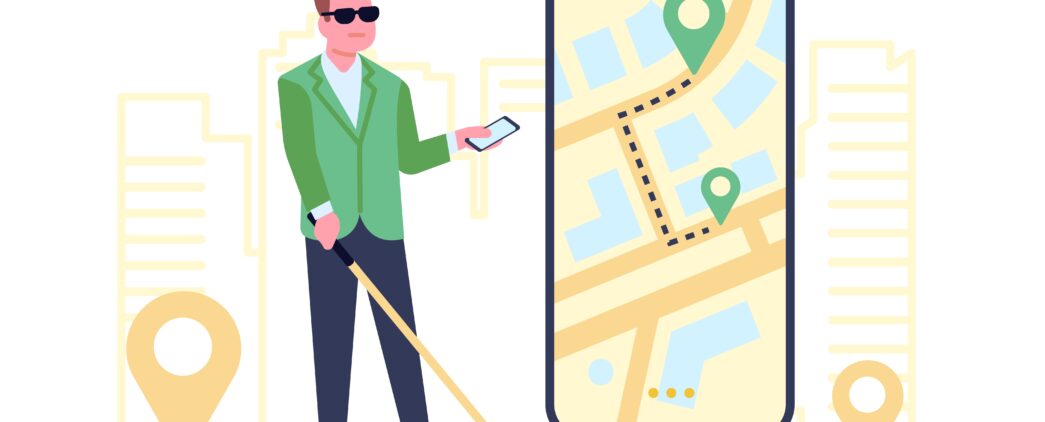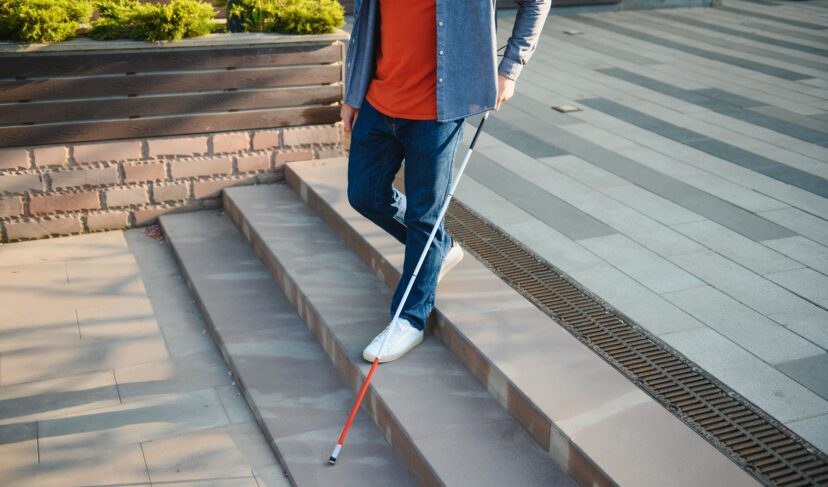Echoes Redefined: a Conversation with Daniel Kish and Derrick Twene
Discussing the growth and value of clicks as a blind navigation tool.

What do you think of when you think of echoes? Almost all of us understand echoes to be a rough sonic equivalent to reflections. Echoes are a repetition of the original. They give us a somewhat muted version of the “real” sound.
Daniel Kish and other travel instructors from World Access for the Blind advocate for and personally use echoes in a very different way. Rather than being a shadow of the whole, echoes are the building blocks. Making a series of clicks helps travelers who are blind build up a mental picture. Traditionally, people have used echolocation or “facial vision” to differentiate between walls and doorways or buildings from open spaces. However, making full use of clicks and echoes enables people to build images of buildings, counters, kiosks, trees, cars, and many other indoor and outdoor objects.
Why don’t many blind people walk around clicking to build up their mental picture network? In large part, this is due to social stigma. Until recently, people who were blind were taught specific routes or patterns, and if they were really great at travel or lucky, they could generalize information from their travels to unfamiliar routes.
Now, orientation and mobility, the field of travel for blind people, embraces the idea of structured and systematic discovery. People don’t just want to learn how to get to the store, the school, and the workplace. They want tools to build up their knowledge of unfamiliar places, which they can generalize to new and different locations. I should add that blind people have been traveling for as long as they’ve existed. It’s just that the study of travel was previously organized by people who could see. Blind people were not deemed qualified to teach each other how to travel, and tools, like clicks, that sighted people did not understand were not part of the approved toolbox.
Echolocation is undergoing the journey Braille and ASL went through. People without disabilities who had power to make educational and professional decisions did not immediately understand important yet novel tools created by people with disabilities. Daniel Kish, who earned both his COMS and NOMC (certifications in orientation and mobility for traditional and structured discovery methods, respectively), considers himself an educator, someone who draws out knowledge rather than cramming it in, and a freedom facilitator.
During our talk with Daniel Kish on the Article 19 podcast, he pointed out that not all societies are averse to clicks. Many types of bats, dolphins, and toothed whales expect their young to echolocate, just as our society expects people to learn visually. Daniel also pointed out that it takes sighted humans roughly 21 years to learn visually, although vision is assumed to be the default understanding that comes to people at birth. And finally, Daniel reminds us that our brains are always more elastic than we think. Yes, learning can be harder with age, but learning is lifelong.
This was reinforced by Daniel’s friend and student, Derrick Twene, whose story about literally rewiring his brain makes a fascinating, profound listen. We hope you’ll listen to the full interview with Daniel Kish and Derrick Twene on Article 19. Let us know what you think!
—
Kristen Witucki is a Tamman partner and contributor. A published author and educator, she brings her lived experience and perspective as a woman who is blind to the Tamman Team.





